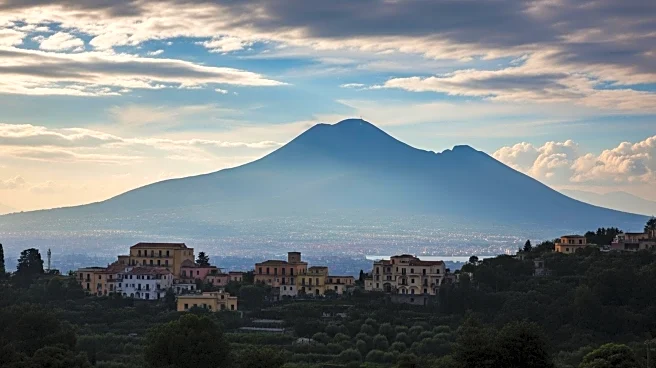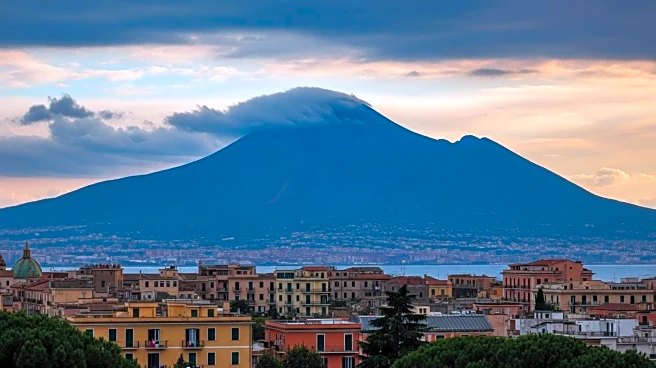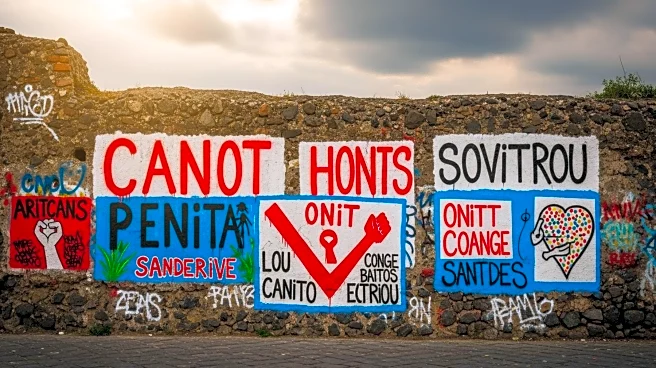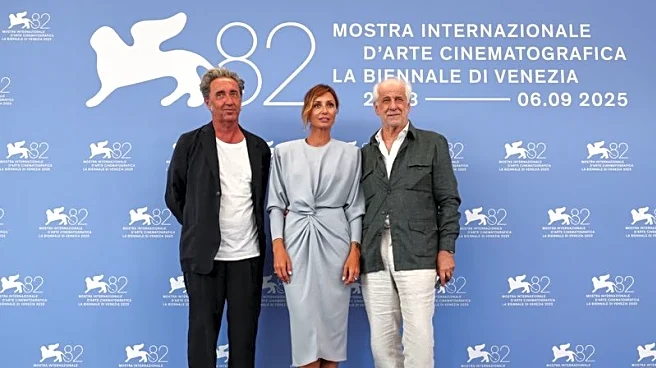What's Happening?
Gianfranco Rosi's latest documentary, 'Below the Clouds,' delves into the lives of people living near Mount Vesuvius, a historically significant and active volcano. The film, shot over three years, captures the essence of life in the shadow of Vesuvius, juxtaposing ancient history with contemporary challenges. Rosi's work is known for its immersive aesthetic, and this film is no exception, offering a unique perspective on the region's cultural and geological significance. The documentary explores the ruins of Pompeii, the clandestine tunnels beneath them, and the ongoing threat of volcanic activity, all while highlighting the resilience of the local population.
Why It's Important?
The documentary sheds light on the enduring impact of historical events, such as the eruption of Vesuvius in 79 A.D., on modern society. It highlights the ongoing risks faced by communities living near active volcanoes and the cultural heritage preserved in the ruins of Pompeii. By documenting these aspects, Rosi's film contributes to the understanding of how past disasters shape present-day life and the importance of preserving historical sites. The film also touches on broader themes of adaptation and survival, relevant to societies worldwide facing natural and man-made challenges.
What's Next?
The film's release at the Venice Film Festival may spark discussions on the preservation of historical sites and the management of natural disaster risks. It could lead to increased interest in the cultural and geological study of regions like those surrounding Mount Vesuvius. Additionally, the documentary might inspire further exploration of the relationship between ancient history and contemporary life, encouraging more filmmakers to tackle similar subjects.
Beyond the Headlines
Rosi's documentary raises questions about the ethical implications of tomb robbing and the black market for antiquities. It also explores the cultural dimensions of living in a region with a constant threat of disaster, highlighting the resilience and adaptability of its inhabitants. The film's portrayal of the juxtaposition between ancient and modern life offers a deeper understanding of how historical events continue to influence cultural identity.












